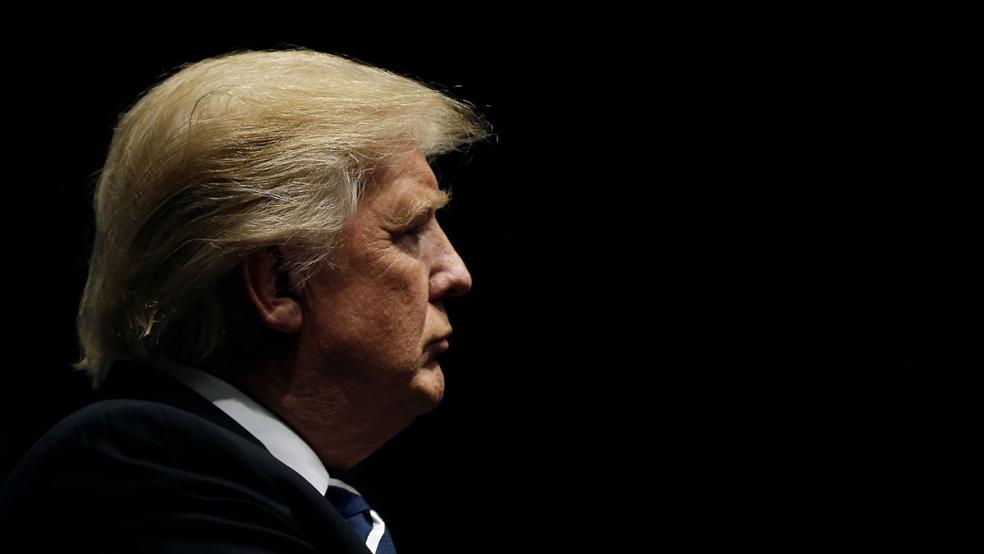The Trump administration predicts that its policies will return America to 4 percent annual economic growth, last seen in the 1980s and 1990s. As the new president correctly points out, growth during the Obama years was dismal. Instead of surging out of downturns, as we did in the past, our economy basically flatlined in the aftermath of the Great Recession.
The contrast with previous decades is stark: After a deep recession in the early 1980s, we experienced 7.3 percent growth in 1984 followed by yearly increases of between 3.5 percent and 4.2 percent for the rest of the decade. By contrast, annual growth in the aftermath of the Great Recession has ranged from 1.6 percent to 2.5 percent. The last year in which we experienced 4 percent growth was 2000.
Trump and Republican policy analysts attribute the economy’s poor performance to excessive taxation, overregulation and inadequate infrastructure investment. Undoubtedly, these factors all restrain growth, but their impacts are hard to quantify. Even if Trump is right about what ails the economy, his pronouncements and actions thus far could produce a near-term surge in GDP growth — but it may not be sustainable. Instead, we could see a bubble, followed by a financial crash and a new recession.
Related: Here’s the Big Threat to Americans That Trump Is Ignoring
Low growth can also be blamed on trends that Trump can’t or won’t address. Since 2012, U.S. exports have remained stagnant largely due to the strength of the U.S. dollar. This contrasts to the situation in the mid to late 1980s, when exports surged on the back of a plunging greenback. The dollar’s current strength may be reinforced in the coming months as the Federal Reserve — politically independent from the administration — raises interest rates. Worse, Trump’s hardball tactics with U.S. trading partners could result in higher foreign tariffs, further hindering the ability of U.S. companies to sell their goods and services abroad.
Demographic Challenges
From a macro standpoint, GDP growth depends on changes in the size of the potentially employable population, labor force participation, unemployment and productivity. In the 1980s, the first of these factors provided the economy with a significant tailwind.
Each month, the Bureau of Labor Statistics estimates the size of the “Civilian Non-Institutional Population” — basically everyone over the age of 16 who is not in the military, prison or a long-term care facility, i.e., anyone who could possibly be in the civilian labor force. This population has been growing at about the same rate as it did in the 1980s, but the story changes when you take out people aged 65 and over, who are mostly retired.
Related: Obama Left Us Much 'Better Off Now Than 8 Years Ago.' Can Trump Top That?
The accompanying table looks at two roughly comparable post recessionary periods, December 1982 to 1989 and December 2009 to 2016. In the earlier period, the civilian non-institutional population below age 65 increased roughly 1 percent annually, but the more recent period saw growth of only half a percent. That slower rate of increase, which is due to demographic factors, can only be made up in the near term by allowing in more working-age immigrants. But the Trump administration is headed in the opposite direction: It appears that we can expect fewer immigrants and thus a relatively stagnant working-age population going forward.
| December | December | ||||||
| 1982 | 1989 | Annual Change | 2009 | 2016 | Annual Change | ||
| Total US Population: | |||||||
| Civilian non-institutional population | 173,199 | 187,165 | 1.10% | 236,924 | 254,742 | 1.00% | |
| Labor Force Size | 111,083 | 124,497 | 1.60% | 153,111 | 159,640 | 0.60% | |
| Labor Force Participation Rate | 64.10% | 66.50% | 64.60% | 62.70% | |||
| Age 65+ | |||||||
| Civilian non-institutional population | 25,619 | 29,462 | 2.00% | 38,362 | 48,837 | 3.50% | |
| Labor Force Size | 2,994 | 3,445 | 2.00% | 6,672 | 9,185 | 4.70% | |
| Labor Force Participation Rate | 11.70% | 11.70% | 17.40% | 18.80% | |||
| Below Age 65 | |||||||
| Civilian non-institutional population | 147,580 | 157,703 | 1.00% | 198,562 | 205,905 | 0.50% | |
| Labor Force Size Below Age 65 | 108,089 | 121,052 | 1.60% | 146,439 | 150,455 | 0.40% | |
| Labor Force Participation Rate | 73.20% | 76.80% | 73.70% | 73.10% | |||
| Selected Labor Force Statistics, Amounts in Thousands Source: Bureau of Labor Statistics, Authors Calculations |
|||||||
The figures also show some opportunities to increase growth. Labor force participation among older adults, while still low, has been rising. If this trend were to accelerate, more growth would be possible. Among adults below age 65, the labor force participation rate was almost 4 percent lower at the end of 2016 than it was at the end of 1989. If more good jobs become available, many adults not now in the workforce could be enticed to enter. Given Trump’s focus on job creation and the slack in the labor force, he has an excellent chance to boost economic growth at least on a one-time basis.
Trump Inherits a Solid Job Market. Can He Really Make It Better?
Lower taxes, less regulation and infrastructure investment would not only create attractive jobs, but they could also boost productivity. With respect to infrastructure, however, the productivity benefit will depend upon which projects are funded. Improvements to our transportation system will reduce time-wasting delays, allowing employees who travel by car or plane during the workday to get more done. On the other hand, a large investment in a 2000-mile border wall won’t provide ongoing economic benefits. Building the wall will create jobs, but once the structure is built, it will not generate new economic activity.
The Benefits of Deregulation
Trump’s steps toward energy deregulation are especially positive for economic growth. Producing more energy domestically is not only good for oil, gas and coal producers, but it will also hold down energy costs and protect us from price spikes (admittedly, I’m leaving aside the environmental impacts of more fossil fuel production here). While it is common knowledge that the OPEC oil embargo led to a severe recession in the 1970s, analysts often fail to recognize the role of energy prices in the Great Recession. Gasoline prices surged from $2.30 per gallon in early 2007 to $4.10 per gallon in the summer of 2008, before falling back later in the year. As a result, new auto sales collapsed, with higher-priced, gas-guzzling SUVs taking the biggest hit.
Related: Here’s How Trump Could Drive the Economy Into a Ditch
Although energy deregulation should promote economic growth, Trump’s plans to cut financial regulations may backfire. On Friday, the president ordered a review of federal financial regulations with the intention of rolling back the impact of the Dodd-Frank Act. This executive order may be followed by an outright repeal of portions of the law later in the year, if Senate Republicans can craft language that will survive an almost certain filibuster.
Criticisms of Dodd-Frank often focus on the law’s impact on smaller community banks and the resultant decline in small business lending. However, web-based lending platforms such as OnDeck, LendingClub and Funding Circle now offer loans to small companies, thereby taking up the slack caused by the closings and mergers among community banks. Indeed, the small brick-and-mortar bank immortalized by the movie It’s a Wonderful Life may simply be a thing of the past: Just as streaming video killed off video rental stores, more technologically advanced, lower-cost alternatives may be replacing local banks.
Dodd-Frank’s main intention was to avoid a repeat of the 2008 financial crisis by more aggressively regulating large, systematically important institutions. Dodd-Frank reforms such as the Volcker Rule, which restricts banks from making certain kinds of speculative investments, have made big financial firms less profitable, less dynamic and less exciting places to work.
Related: Wall Street's Honeymoon With Trump Is Over
Wall Street deregulation might draw the best and brightest away from Silicon Valley and back into banking — and in the process trigger a new wave of financial innovation that again ends badly. Some of the preconditions for a bubble are already in place: Stock prices are at record highs, more than triple their March 2009 levels. Meanwhile, the monetary base has more than doubled, providing plenty of raw material for a new generation of financial engineers.
Repealing Dodd-Frank would lower compliance burdens, making banks more efficient and thus better equipped to provide consumers with a wider range of services. But the law must be replaced with other measures to prevent Wall Street from gambling with FDIC-insured deposits and the implicit guarantee of future taxpayer bailouts. Otherwise the crashes of 1929, 2000 and 2008 may not just be distant memories, they may serve as precedents for the Trump era.






